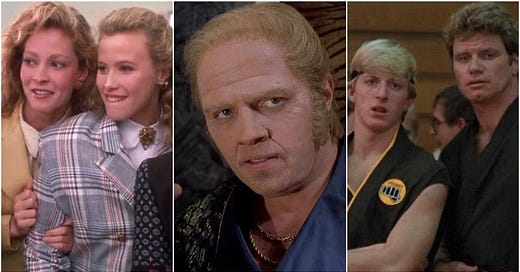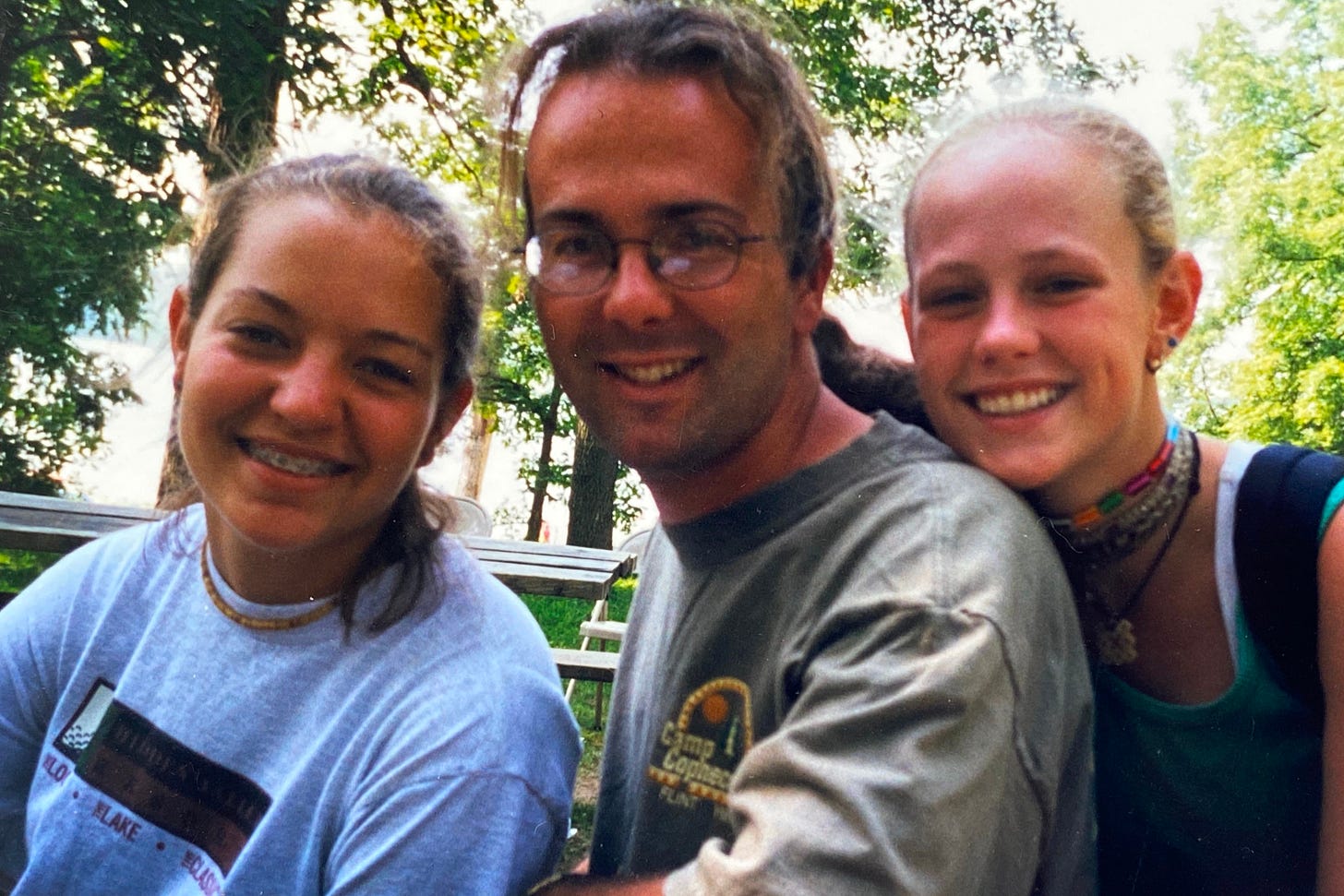The 80s Lied to Us About Bullies. Here’s What’s Really Happening.
Why we need pro-hero schools instead of anti-bullying schools.
I spent much of this week talking to people working in and around schools and the old bullying topic came up repeatedly. The Australian government is asking for submissions to an Anti-Bullying Rapid Review because school culture here is starting to scare away both teachers and students. And their parents. Parents of students AND teachers. So, I figured it was time to revisit my most popular TEDx talk.
Walk into just about any school and you’re bound to see it: No Bully Zone. Anti-Bullying Pledge. Posters with red slashes through the word bully. On the surface, it seems like a good thing. We’re taking bullying seriously. We’re showing kids what’s not okay. We’re making our schools safe.
But I have to be honest - every time I see one of those signs, I cringe a bit. Actually, quite a lot. Not because I think bullying isn’t a problem. It absolutely is. I cringe because the way we’ve been trying to solve it is broken.
There are four main problems.
The Definition Problem
I visit schools around the world, and one of the first questions I like to ask students is simple: “What is bullying?”
At one middle school in Michigan, I gave a classroom of kids three minutes to write their answers. I got 89 different definitions. 89!
So when a school gets every student to pledge not to bully, what are those students actually pledging? If Bertha thinks bullying only means physical violence, she can sign that pledge with a clear conscience and then turn around and call someone a homophobic slur - yet again - and feel like she’s keeping her word.
This messes with how we talk about behaviour. One nasty look? “Bullying.” A rude joke? “Bullying.” A year-long campaign of targeted humiliation? Also bullying. See the problem? The term has been stretched so far that it covers everything and nothing.
That’s a nightmare for schools. I’ve talked to assistant principals who spend half their days dealing with parent complaints that boil down to: “My kid got called a name. You said your school doesn’t tolerate bullying!” One exasperated principal told me:
“There’s a difference between being a jerk and being a bully.”
That nuance is lost when the only word we use is “bullying” - and we use it for everything.
Worse still, kids don’t even use the word “bully.” It’s adult language. It’s poster language. It doesn’t show up in real conversations. So if the word means anything and everything AND kids aren’t using it, how is it helping anyone?
The 80s Movie Problem
Most of the adults in charge of schools today (and I) grew up on a steady diet of teen movies. And in those movies, bullies were easy to spot. They were big. They were mean. They had names like Biff and Heather. They picked on the weak, and they always lost in the end (ideally with a Crane Kick). Cue the credits.
That’s the image we’ve carried with us into adulthood. But that’s not how it works.
A study covered in the New York Times found that more than half of students in middle and high school were involved in bullying behaviour - but not the way we picture it. Most of the aggression happens between kids who are close in social status in the top half of the pecking order. It’s about climbing the ladder, not terrorising from the top.
Kids spread rumours, tease, exclude, and even lash out physically. That’s not because they’re cartoon villains, but because they’re trying to move up the social pecking order. It’s strategic. And it’s everywhere.
That study also found something interesting: the top 2% of kids on the social ladder weren’t bullying. They’d already made it. They didn’t need to. That’s an opportunity. If schools can get those high-status kids on board, the whole culture can shift.
And let’s not forget the internet. Most of us never experienced what it’s like to be bullied online. Movies from the 80s didn’t have to include that. To be humiliated in a group chat, or have something cruel spread to hundreds (or thousands) of classmates in seconds is way beyond this paradigm. If we’re still thinking about bullying like it’s The Breakfast Club, we’re way off.
The Labelling Problem
Calling someone a “bully” feels like action. It feels like we’re naming the bad guy. But in reality, we’re just creating a new problem.
“Bully” is a sticky label. Once it’s stuck to you, it’s hard to shake. I’ve seen kindergarteners - actual five-year-olds - get labeled as bullies. These are kids who have just had the biggest world-changing moment of their lives (entering school) and are trying to figure out what this place is, who they are, and how it all works. Once that label is there, it follows them. Teachers warn the next year’s staff. Parents tell their kids to stay away. Invitations dry up. Every year, the label follows them like a mosquito in a tent.
A lot of the time, the behaviour we’re calling bullying is just a kid who doesn’t yet have the social skills to navigate group dynamics. Instead of helping them learn those skills, we slap a label on their back and push them further to the edges. And guess what happens then? They act out. Again. And the cycle continues.
The “Anti” Problem
Most anti-bullying programs are built around the word don’t. Don’t tease. Don’t hit. Don’t spread rumours. Don’t, don’t, don’t. I get it. I’ve done it.
When I worked at a summer camp, I used to write up the cabin rules: Don’t run. Don’t throw things. Don’t go barefoot.
When I became the director, I flipped the script. I created The Big Ten camp rules. We were in Michigan, so people loved that (for the international readers, that’s a college sports reference). Not one of them noticed there were only nine rules. The rules were things like:
“Love your feet.” (instead of don’t go barefoot)
“Leave it on the ground.” (instead of don’t throw sticks)
“Let the wild things be wild.” (instead of don’t pick up snakes)
Suddenly the rules made sense. They were easy to remember. They were fun to say. And they worked.
Kids respond better to what to do than what not to do. So why don’t we build schools that stand for something instead of against something?
A better way: Pro-hero, not anti-bully
Here’s my proposal: instead of building anti-bullying schools, let’s build pro-hero ones.
Let’s stop telling kids what not to be. Let’s show them what they can be.
What is a hero? Someone who takes action for the good of others, despite risk or sacrifice. That’s it. That’s the whole definition.
That risk is important. Because helping someone being bullied is risky. You could become the target. You could stand out. You could lose status. Which is exactly why it counts.
But courage is contagious. Once one kid stands up, others follow. And remember that top 2% on the social ladder? If they step in, the impact multiplies.
So how do we raise heroes?
We train them. We talk about courage. We ask, “What would you do in that moment?” We use stories - real ones, fictional ones, stories from Pixar movies and stories from the news - to help kids imagine themselves doing the right thing. Heroic imagination matters. The more we imagine ourselves acting with courage, the more likely we are to do it.
And when we do that, we don’t just reduce bullying. We reshape the culture.
Because here’s the truth: school bullying doesn’t generally happen in front of adults. It happens in front of kid audiences. And only kids can stop it.
A school full of heroes won’t just be free of bullying. It’ll be free of apathy. It’ll be full of kindness, connection, laughter, and learning. Consider those the beneficial side effects.
Hopefully that sounds a whole lot better than another “No Bully Zone” sign or “Don’t be a Bully” assembly.
Let’s build schools where kids aren’t just safe. They’re brave.
Let’s build schools of heroes.
~ Matt







Yes, this. Reminds me of this Mother Teresa quote: “I was once asked why I don't participate in anti-war demonstrations. I said that I will never do that, but as soon as you have a pro-peace rally, I'll be there.”
I love this, plays into a lot of things I talk about with adults as well, that perspective of guidance is so important!!